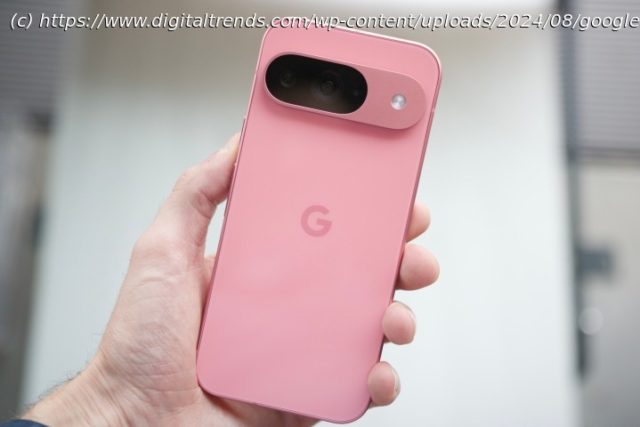Have a Google Pixel 8 and wondering if you should upgrade to the new Pixel 9 this year? Let’s take a closer look at what you’d get.
Google has unveiled its 2024 smartphone lineup, including the Pixel 9, Pixel 9 Pro, Pixel 9 Pro XL, and Pixel 9 Pro Fold. Google has really pulled out all the stops this year, producing a big stable of phones with gorgeous designs, much improved battery lives, and the customarily amazing cameras we’ve come to expect from Google’s phones. They really are the top Google phones for this year.
But while they may have exceeded last year’s Pixels, are they a must-upgrade? If you currently have a Pixel 8, you might be considering upgrading to the Pixel 9 — but should you? We have the answers for you, so you can make the best choice. Read on below.Google Pixel 9 vs. Pixel 8: specsGoogle Pixel 9 vs. Pixel 8: design and display
This year, Google gave the Pixel 9 a big design change from its predecessor, the Pixel 8. The Pixel 9 features a redesigned frame with flattened edges instead of the Pixel 8’s curved sides. The corners are still rounded, but with the flat sides, and it should be easier to hold.
But the biggest change is the revamped camera bar. Previously, the Pixel 8 had a straight camera bar that merged into the sides of the frame itself. The Pixel 9 has a more elongated capsule-shaped module that ends before it reaches the sides of the phone. You still only get a dual-camera system with the Pixel 9, so the two lenses are housed in this new camera module along with an LED flash.
The Pixel 9 and Pixel 8 have glossy backs and matte aluminum frames, along with an IP68 water and dust resistance rating. However, the Pixel 8 utilizes Corning Gorilla Glass, while the Pixel 9 has better durability thanks to Corning Gorilla Glass Victus 2.
For colors, Google gave the Pixel 9 four choices: Peony, Wintergreen, Obsidian, and Porcelain. The Pixel 8 also came in four colors: Rose, Mint, Obsidian, and Porcelain. Those who were disappointed with the “pink” that was supposed to be Rose for the Pixel 8 will absolutely love the Peony Pixel 9 — it’s a much more vibrant shade of pink.
There are also some differences between the Pixel 8 and Pixel 9 as far as displays go. Google has bumped up the size of the display on the Pixel 9 to 6.3 inches from the Pixel 8’s 6.2-inch screen due to thinner and more uniform bezels all around. The Pixel 9 still uses Google’s Actua Display OLED panel, which has a refresh rate between 60Hz and 120Hz.
There are some differences, though. While the Pixel 8 had a 1080 by 2400 resolution at a 428-pixels-per-inch (ppi) density and a 20:9 aspect ratio, the Pixel 9 has a 1080 by 2424 resolution at 422 ppi. The brightness on the Pixel 9 can also reach up to 1800 nits for HDR content and peak brightness at 2700 nits. This is an improvement over the Pixel 8’s 1400 nits for HDR content and maximum of 2000 nits peak, though the aspect ratio remains unchanged.
In our review, we mentioned that the Google Pixel 9 is the most attractive and well-presented standard Pixel phone yet. Moreover, it is one of the best smartphones you can buy. This phone is aesthetically pleasing, with impressive ergonomics, and it feels great in the hands due to its satin-finish metal chassis that isn’t slippery at all. In summary, the Pixel 9 is a joy to use. Design-wise, it’s a remarkable improvement compared to the Pixel 8.Google Pixel 9 vs. Pixel 8: cameras
Though both the Pixel 8 and Pixel 9 have dual-camera systems, the Pixel 9 does have upgraded sensors compared to the Pixel 8.






